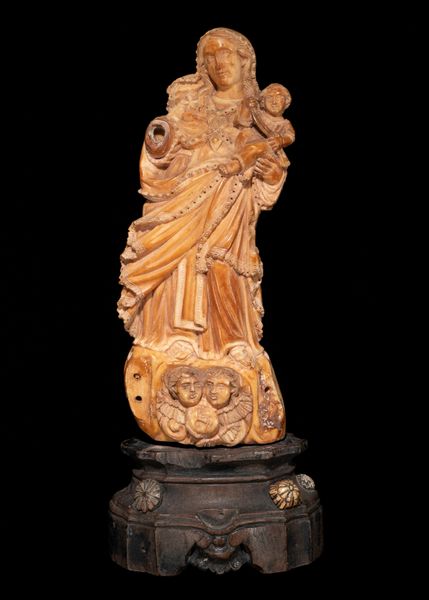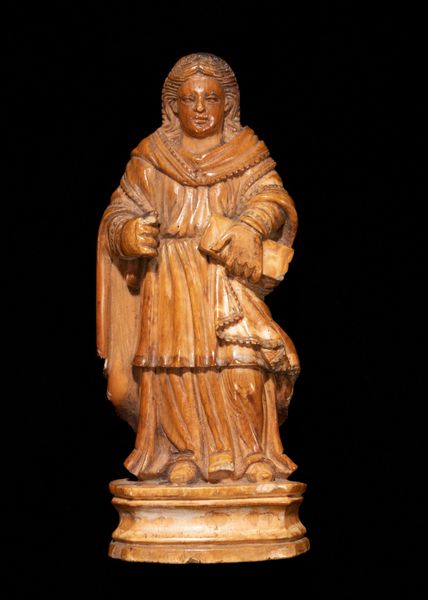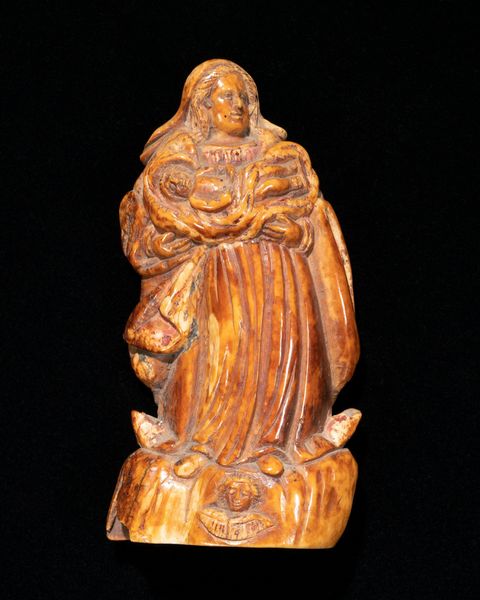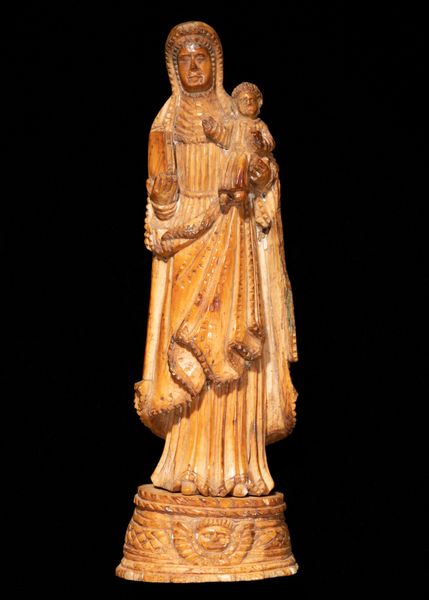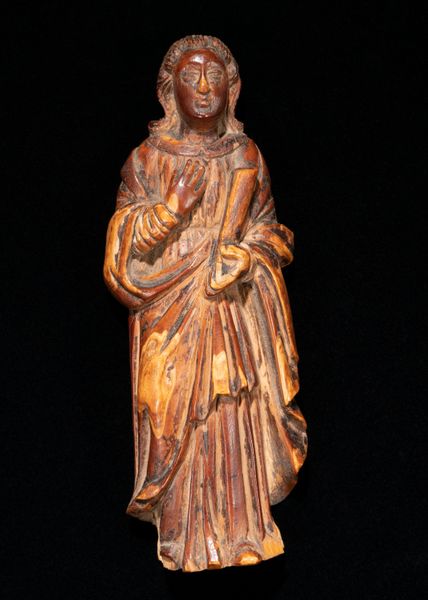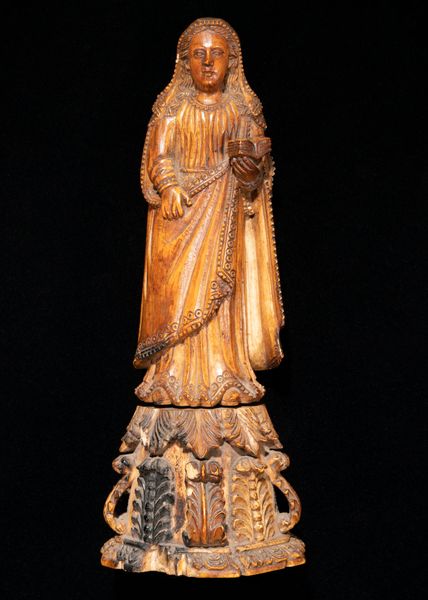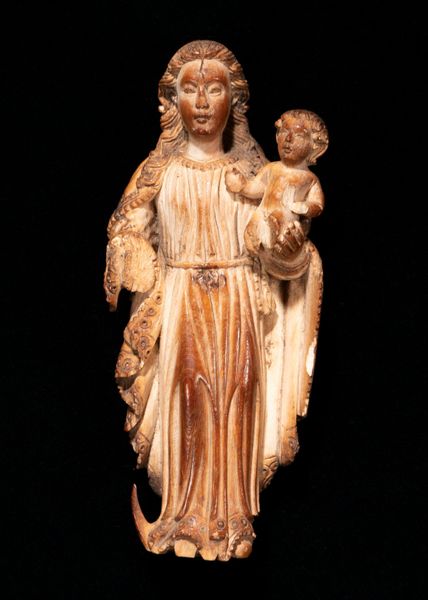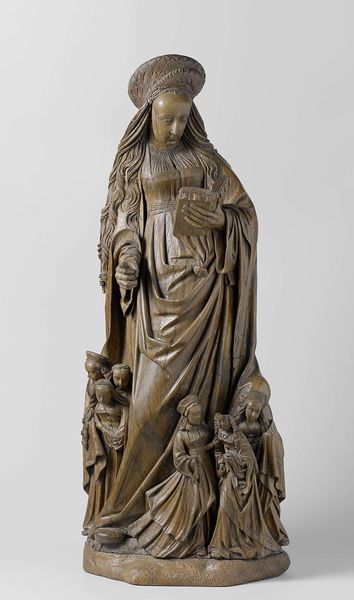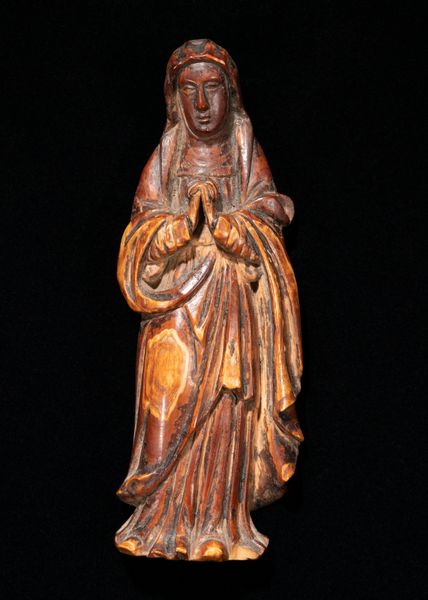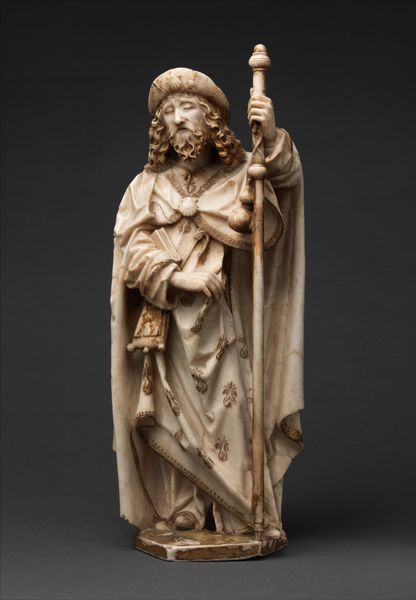
carving, sculpture, ivory
#
portrait
#
carving
#
baroque
#
sculpture
#
figuration
#
sculpture
#
ivory
Dimensions: 5 1/4 × 2 5/8 × 1 3/16 in. (13.34 × 6.67 × 3.02 cm)
Copyright: Public Domain
Editor: Here we have an intriguing piece! A baroque-style carving of Saint Anthony of Padua, made of ivory sometime in the 17th or 18th century. I’m struck by the gentle, almost tender expression on Saint Anthony’s face, especially considering it’s a sculpture. How would you interpret this work? Curator: Well, this sculpture really sings to me. Ivory, already imbued with its own quiet history and origins, adds a layer of depth, don’t you think? But what stands out for me is how it invites contemplation. Baroque art often goes big, dramatic – think sweeping gestures and bold statements. Yet here, we see an intimacy. There’s this sense of protection, of guidance being offered by Anthony towards the Christ Child and, metaphorically, towards us as viewers. Does the gaze connect to you? Editor: It does, actually. It's not just looking at you but also looking inward. So it’s not *just* about religious symbolism, is it? Curator: Exactly! The skill is amazing – carving such delicate features from ivory, making it come alive… it almost breathes. It goes beyond craft into a realm of emotional and spiritual resonance. But tell me, does the material impact the feeling it evokes for you? Editor: Definitely. The ivory gives it a sense of preciousness and antiquity, like a treasure passed down through generations. I hadn't fully appreciated how much the material could contribute. Curator: And isn't that the magic of art? To continually surprise, to offer a new layer of understanding each time you look. It's whispering stories that sometimes take time to fully unravel. Editor: Absolutely. It’s given me a completely different lens through which to view baroque sculpture. Curator: It all just adds depth to that whisper doesn't it?
Comments
minneapolisinstituteofart almost 2 years ago
⋮
The province of Goa in western India was under Portuguese control from 1512–1961, forming a nexus in trading routes that circumnavigated the earth. Goan craftsman were renowned for their supple modeling of ivory (likely exported from Mozambique) into Christian icons, which feed the appetite for luxury products in Europe, as well as furthered evangelical missions throughout Asia and the Americas. Within the genre of Indo-Portuguese ivories, popular subjects include ‘Christ as the Good Shepard’ (the image of Christ as child would have related to similar bronze statuettes of the God Krishna) and the ‘Virgin of the Immaculate Conception,’ which shows Mary atop a crescent moon, both of which remain ever-present icons in South Asia’s diverse religious landscape.
Join the conversation
Join millions of artists and users on Artera today and experience the ultimate creative platform.
